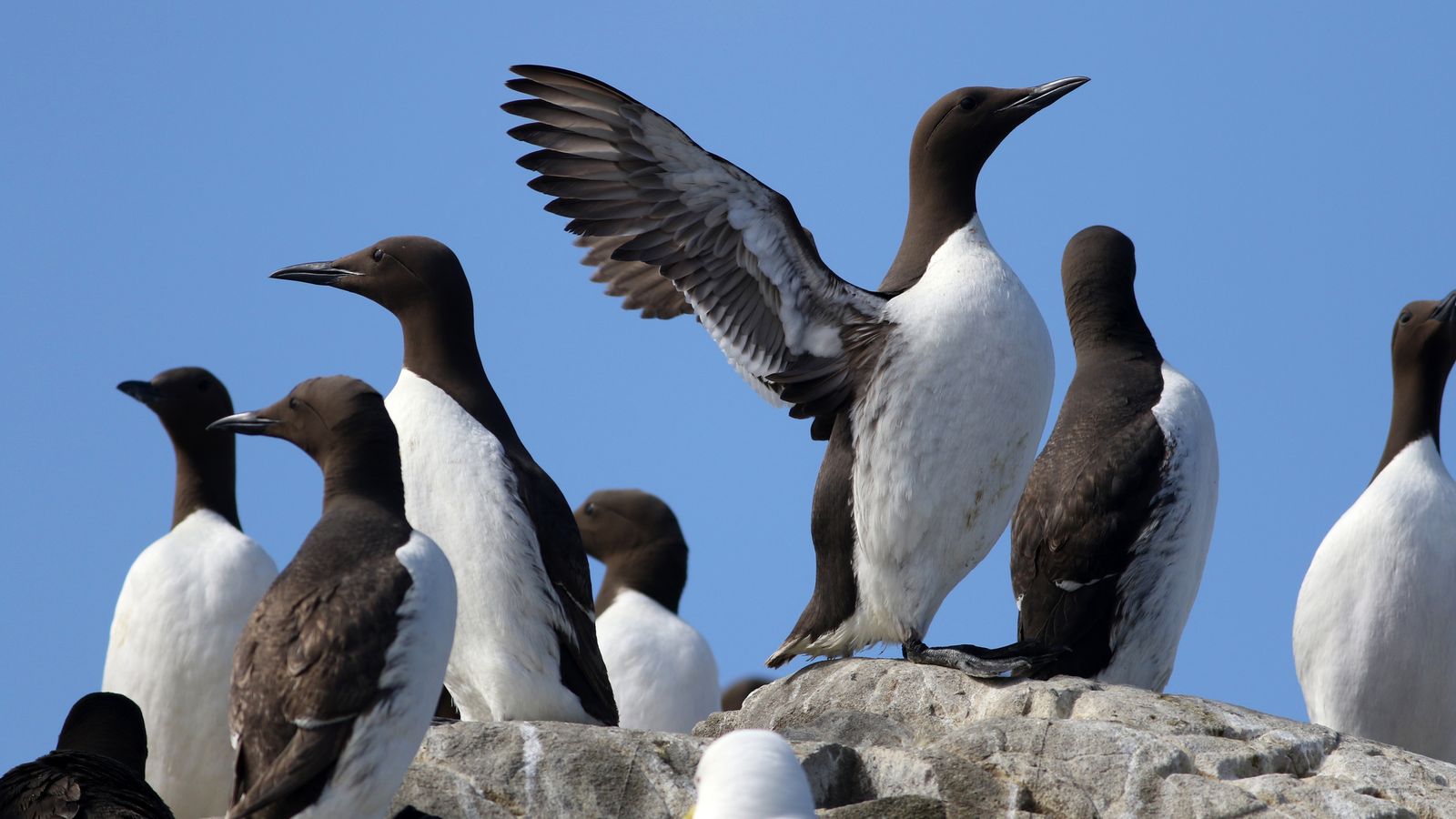Guillemots, kittiwakes and terns in Scotland have suffered “huge losses” at their breeding colonies this summer due to avian flu, according to NatureScot.
The nature agency said it had received 9,610 reports of dead and sick wild birds across the nation between 3 April and 1 October this year.
The majority of the reports were said to have come from locations along the east coast.
At Forvie National Nature Reserve, more than 40% of this year’s sandwich, common and Arctic tern chicks died.
NatureScot said that a degree of natural mortality is normal among tern chicks, but the “scale and sudden nature” of avian flu-related deaths this summer has been “unusual”.
The Scottish government agency said when combined with the number of adult deaths reported, the losses are “extremely concerning for the recovery of these long-lived birds”.
With fewer great skua and gannet deaths reported, experts hope that some of the birds are building immunity to the deadly Highly Pathogenic Avian Influenza (HPAI) virus.
French holocaust denier Vincent Reynouard faces extradition from Scotland
Clown ‘stalking village streets and leaving residents terrified’ dares police to catch them
River Kelvin search continues for missing woman after man pulled from water in Glasgow
The avian flu outbreak in wild birds in the UK began in 2021. Its risk to human health is low.
Following a quiet start to spring, a sudden increase in mortalities started in June and reached a peak in mid-July when around 2,300 sick and dead birds were reported to NatureScot within a two-week period.
NatureScot said: “Guillemots, kittiwakes, and terns have experienced huge losses at their breeding colonies this summer.”
Which species have been badly hit?
The species with the highest number of reported mortalities were guillemot (3,519) and kittiwake (3,367), followed by black-headed gull (834), herring gull (371), razorbill (368), common tern (304), sandwich tern (231), Arctic tern (89) and other gulls (125).
The remaining mortality sightings included 26 other species.
Eileen Stuart, NatureScot’s deputy director of nature and climate change, said: “With very few great skua and gannet deaths this summer, we are hopeful that some wild birds are building immunity to HPAI.
“But other species, such as kittiwakes and terns that were impacted last year, have still been greatly affected this year.”
NatureScot noted there had been a spike in guillemot and razorbill deaths over the past month, but none of the birds have tested positive for HPAI since early August.
Interim post-mortem results indicate “possible starvation”, but results from further examinations “may provide more information”.
Please use Chrome browser for a more accessible video player
Read more:
Scientists use gene editing to create chickens resistant to bird flu
Bird flu outbreak poses ‘significant threat’ to precious UK seabird colonies
Be the first to get Breaking News
Install the Sky News app for free
The agency said many seabirds are already experiencing multiple pressures and population declines and work is ongoing to assess the impact of avian flu and better understand why some species have been hit harder than others.
It also said populations are likely to take “years to recover”, with an estimated 20,000 seabirds dying from avian flu in summer 2022 in addition to the deaths this year.
This summer, the Royal Society for the Protection of Birds Scotland (RSPB Scotland) carried out an enhanced programme of seabird monitoring. The results are expected to be published early next year.
Early results for great skua, one of the species badly affected in 2022, show a drastic population decline of the breeding population at Hermaness National Nature Reserve of 78%.
‘Wake-up call to boost conservation’
Scotland’s Avian Flu Task Force is now preparing for wintering waterfowl.
Last winter, there were said to be mass mortalities in Greenland barnacle geese on Islay, mute swans in Central Scotland, and herring gulls in the Firth of Forth.
Claire Smith, senior policy officer for RSPB Scotland, said it was “devastating” to see thousands of dead birds again this year.
She added: “This needs to be a wake-up call to step up the speed and scale of practical conservation actions to help our globally important seabird populations recover.”







